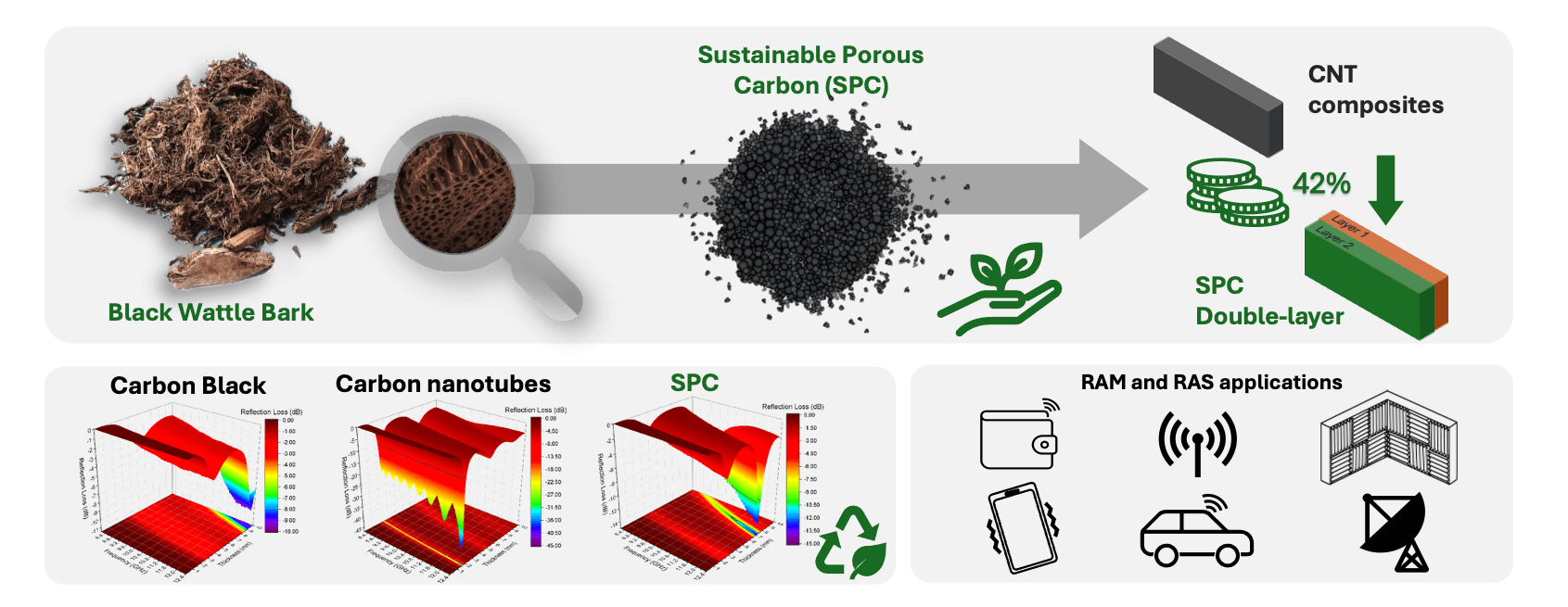 Open Access
Open Access
ARTICLE
Why Sustainable Porous Carbon Should be Further Explored as Radar-Absorbing Material? A Comparative Study with Different Nanostructured Carbons
1 Department of Metallurgical and Materials Engineering, University of de São Paulo, Avenida Mello Moraes, Cidade Universitária, São Paulo, SP 05508-030, Brazil
2 Coordination of Applied Research and Technological Development, National Institute for Space Research, Avenida dos Astronautas, Jardim da Granja, São José dos Campos, SP 12227-010, Brazil
3 Department of Exact and Technological Sciences, Santa Cruz State University, Rodovia Jorge Amado, km16, Ilhéus, BA 45662900, Brazil
4 Institut de recherche sur les forêts, Université du Québec en Abitibi-Témiscamingue, Rouyn-Noranda, 445 Bd de l’Université, Rouyn-Noranda, QC J9X 5E4, Canada
* Corresponding Author: Flavia L. Braghiroli. Email:
(This article belongs to the Special Issue: Renewable Nanostructured Porous Materials: Synthesis, Processing, and Applications)
Journal of Renewable Materials 2024, 12(10), 1639-1659. https://doi.org/10.32604/jrm.2024.056004
Received 11 July 2024; Accepted 02 September 2024; Issue published 23 October 2024
Abstract
Radar Absorbing Materials (RAM) are a class of composites that can attenuate incident electromagnetic waves to avoid radar detection. Most carbon allotropes that have the potential to be used as RAM are either carbon nanotubes (CNTs), graphene, carbon black (CB) and ultimately, sustainable porous carbon (SPC). Here, black wattle bark waste (following tannin extraction) was used as a sustainable source to produce SPC made from biomass waste. It was characterized and used as a filler for a silicone rubber matrix to produce a flexible RAM. The electromagnetic performance of this composite was compared with composites made with commercial CB and CNT through reflection loss (RL), where −10 dB is equivalent to 90% of attenuation. These composites were evaluated in single-layer, double-layer, and as radar absorbing structures (RAS) with the aim of improving their effective absorption bandwidth (EAB) performances and a reduction in costs. The CNT composite presented a RL of −26.85 dB at 10.89 GHz and an EAB of 2.6 GHz with a 1.9 mm thickness, while the double-layer structures using CNT and SPC provided a RL of −19.74 dB at 10.75 GHz and an EAB of 2.51 GHz. Furthermore, the double-layer structures are ~42% cheaper than the composite using only CNT since less material is used. Finally, the largest EAB was achieved with a RAS using SPC, reaching ~2.8 GHz and a RL of −49.09 dB at 10.4 GHz. Summarizing, SPC made of black wattle bark waste can be a competitive, alternative material for use as RAM and RAS since it is cheaper, sustainable, and suitable for daily life uses such as absorbers for anechoic chambers, sensors, and electromagnetic interference shields for electronics, wallets, vehicles, and others.Graphic Abstract

Keywords
Cite This Article
 Copyright © 2024 The Author(s). Published by Tech Science Press.
Copyright © 2024 The Author(s). Published by Tech Science Press.This work is licensed under a Creative Commons Attribution 4.0 International License , which permits unrestricted use, distribution, and reproduction in any medium, provided the original work is properly cited.


 Submit a Paper
Submit a Paper Propose a Special lssue
Propose a Special lssue View Full Text
View Full Text Download PDF
Download PDF Downloads
Downloads
 Citation Tools
Citation Tools